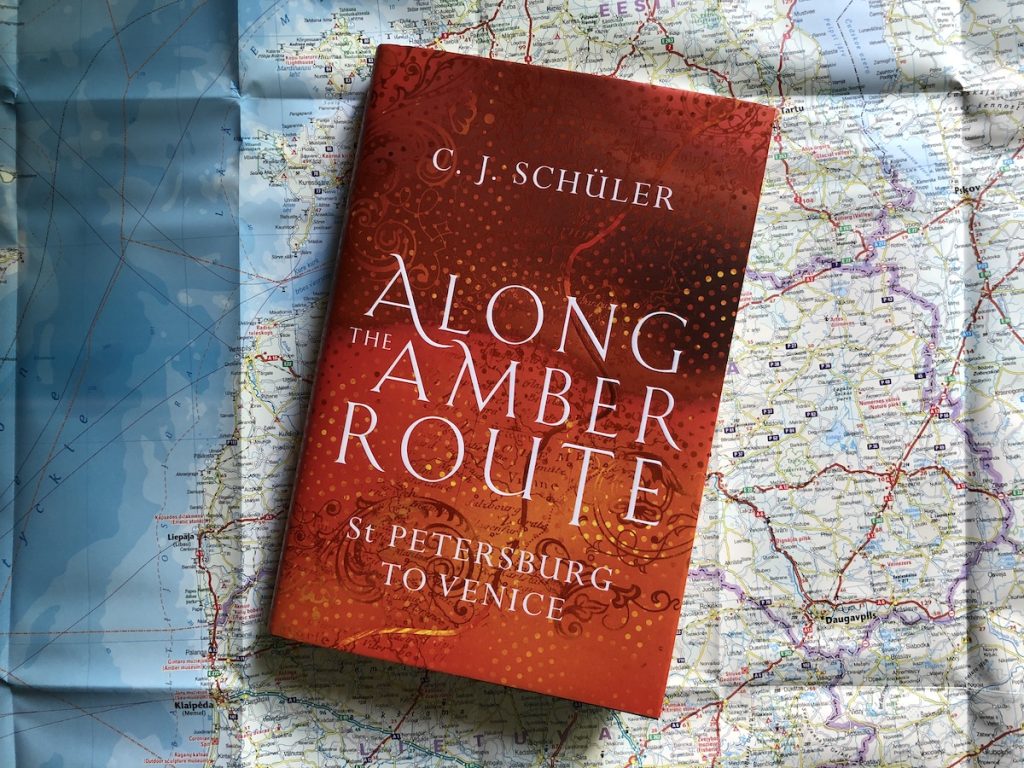
Along the Amber Route traces C.J. Schüler’s journey down one of Europe’s great long distance trading routes.
Like other ancient trade routes, this one had several branches running for some 2,500km from St. Petersburg on the edge of the Baltic Sea to the great trading city-state of Venice on the Adriatic.
The existence of the Amber Route predates both of those cities. Reference to a tribe called the Aesti who gathered this strange substance on the shores of the Suevian Ocean — the Baltic Sea — appears as early as 98 AD in the writing of the historian Tacitus.
It was at different times prized as a luxury item, believed to have healing properties, and treasured as a time capsule of the ancient creatures — ‘inclusions’ — that have been trapped in it, most often plants and insects, but also lizards.
I’d always thought amber was fossilized tree resin, and it is the resin of conifer trees from the prehistoric forests of northern Scandinavia. But as as Schüler points out, ‘fossils’ are imprints of organic objects left in stone. Amber is the actual resin transformed by polymerization and oxidation.
The Baltic Sea produces 90% of the world’s supply. I made a circuit of that sea in 2015 to write a magazine feature and several columns, and I encountered the stuff everywhere, especially in Lithuania, Latvia and Estonia.
Schüler’s book brought back memories of magical evenings on the Curonian Spit, where the light is like nowhere else. And it renewed the spark of small regrets at adjacent roads not yet travelled. I didn’t have the opportunity to dip into the Russian exclave of Kaliningrad on that trip, and given the war, it may be years before another opportunity comes up.
I think that was my favourite section, the chapter on Kaliningrad, because it is one of the strangest regions Schüler passes through. But this book and this journey are about more than just amber.
Schüler’s route coincides with his own family’s history, and with his many Jewish ancestors who didn’t survive the Holocaust.
In traveling this route to tell the story of both amber and his family, he gives us a brisk history of Mitteleuropa and glimpses of countries that no longer exist, including Prussia, Czechoslovakia, the dual monarchy of Austria-Hungary, and Yugoslavia.
He also stops for the night at Bernstein Castle, which had been the ancestral home of the Hungarian aviator and Sahara explorer László Almásy, someone whose exploits I’ve admired from afar through his books (and through the excellent account of Almásy’s Second World War exploits, Operation Salam, by my friend Andras Zboray), and from up close through the traces he left behind in the environs around Jebel Uweinat on the borders of Sudan, Libya and Egypt. Crossing Almásy’s path again here was one of the unexpected delights of this book.
Along the Amber Route is an enjoyable and highly readable book that sometimes breezes along more quickly than I’d like. But of course, that just sparks one’s curiosity for further reading and further journeys.
Buy a copy here and take your own Mitteleuropean journey ==> Along the Amber Route
